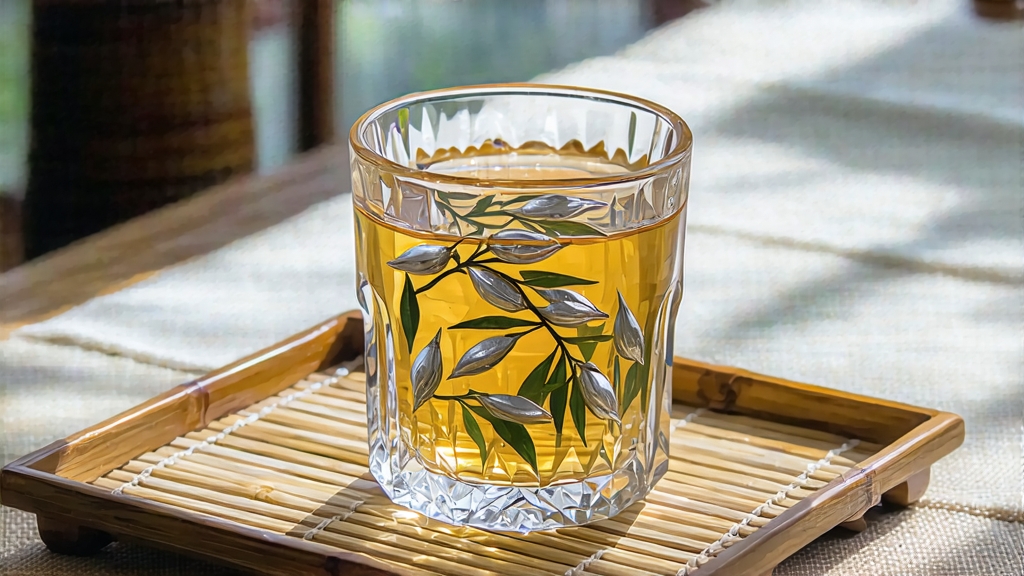
Among the six great families of Chinese tea, white tea is the least theatrical yet most elusive, and within that family Fuding Silver Needle (Bai Hao Yin Zhen) stands as the luminous apex—an uncrowned monarch whose reign is measured not in dynasties but in dew-laden dawns. International drinkers often meet white tea through bagged “bai mu dan” blends, but to taste Silver Needle is to step into a quieter China where time is told by the scent of fresh hay drifting across granite courtyards and the hush of pine needles underfoot.
Historical whispers place the birth of Silver Needle in the mid-Song dynasty, when imperial tribute lists first recorded “white downy shoots” sent from the northeast coast of Fujian. Yet the tea remained largely cloistered in local monasteries until the late Qing, when Fuding’s coastal ports opened to foreign merchants and the down-covered buds sailed to Singapore, then London, where Victorian catalogues praised their “moonlight hue.” Unlike pu-erh or rock oolong, Silver Needle never inspired caravan legends; its story is one of sea breezes, slow junks, and the patience of monks who believed that the less a leaf is handled, the closer it stays to the Dao.
Geography is destiny. The tiny core zone lies inside Fujian’s Fuding and Zhenghe counties, where red granitic soils meet the East China Sea’s humid breath. Day-night temperature swings of 10 °C coax amino acids upward while shrouding the hills in fog that acts as a natural bleach, turning chlorophyll to soft jade and concentrating the tiny white hairs that give the tea its name. Only three cultivars are legally permitted for authentic Silver Needle: Fuding Da Bai, Fuding Da Hao, and Zhenghe Da Bai. Each spring, fields are declared off-limits to pesticides for forty days so that the down remains pristine enough to meet the EU’s stringent pyrifos limits—an invisible quality fence that separates true Silver Needle from the darker, coarser “Yunnan needle” often sold abroad.
Plucking is a haiku: before Qingming, when the first swallow returns, pick only the unopened bud and the imminent leaf, before the sun climbs thirty degrees. Experienced pluckers work with thumbnail precision, dropping the shoots into wicker baskets lined with banana leaf to prevent bruising. A full day’s harvest may weigh only 500 g, enough after drying to fill a single 250 g tin. Such scarcity is not marketing theater; it is the arithmetic of perfection.
The craft that follows is called “two suns and one cool breath,” a rhythm unchanged since 1796. First sun: the buds are spread one layer deep on water-washed bamboo trays and left under a March sun whose UV index hovers at 4–5. For forty minutes the leaf temperature is kept below 32 °C; any hotter and the enzymatic halo dims. Second stage: trays are moved to a shaded corridor where mountain wind, funneled through lattice walls, lowers moisture to 40 %. This withering lasts up to 36 hours, during which the bud slowly arches into a silver hook, its cell walls fracturing just enough to release a precursor of trans-2-hexenal, the compound that later translates into sweet cucumber. Final sun: a 20-minute kiss of late-afternoon light fixes the aroma and drops water activity to 8 %, low enough to foil mold during ocean transit. No pan-firing, no rolling, no charcoal bake—only air, light, and the watchful eye of a master who judges readiness by the brittleness of a stem and the scent of wet pebble that rises when a handful is shaken.
Western tea science has validated what Fujian grandmothers always knew: minimal handling preserves catechins in their monomeric form, yielding a liquor that is anti-oxidant yet low in tannic bite. The same study that measured EGCG at 7.2 % also recorded l-theanine at 1.9 %, a ratio that explains the tea’s signature calm focus—caffeine’s lift without espresso’s jagged edge.
To brew Silver Needle is to practice temporal humility. Begin with neutral water, 80–85 ppm TDS; Highland Spring works, Evian does not. Heat to 85 °C, then wait ninety seconds so the kettle falls to 80 °C—just below the threshold that scorches